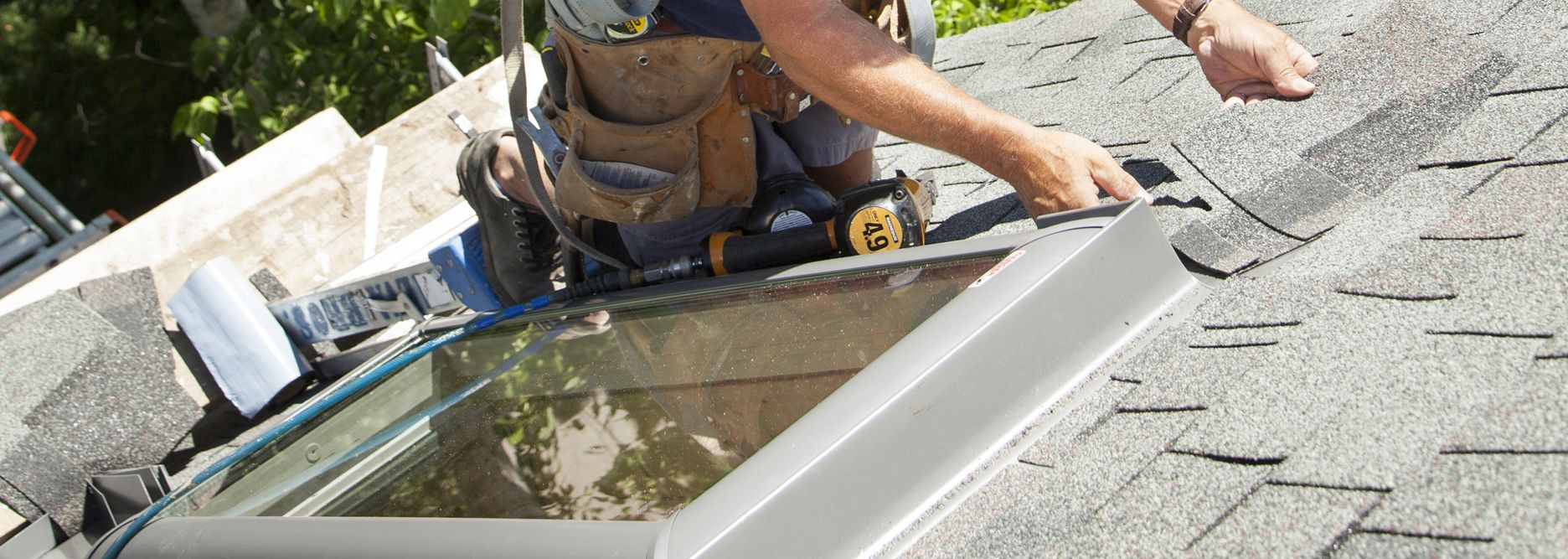We may be compensated if you purchase through links on our website. Our Reviews Team is committed to delivering honest, objective, and independent reviews on home products and services.
Installing a skylight can bring in natural light and create a sense of spaciousness in your home. While many homeowners worry about potential leaks, modern skylights and improved installation techniques have largely eliminated these concerns. In our step-by-step guide, This Old House general contractor Tom Silva demonstrates how to install a skylight.
Tools and Materials Needed
Before you begin the project, make sure you have these tools and materials on hand:
- 1 ¼-inch galvanized roofing nails
- Chalk line
- Circular saw
- Deck screws
- Drill/driver
- Fall protection harness
- Flashing (L-shaped step flashing, counterflashing, saddle flashing, U-shaped sill flashing)
- Roofing nailer
- Roofing shingles
- Self-adhering waterproof membrane
- Skylight (Silva installs a Velux skylight with a 10-year warranty against leakage)
- Utility knife
Step 1: Cut the Opening
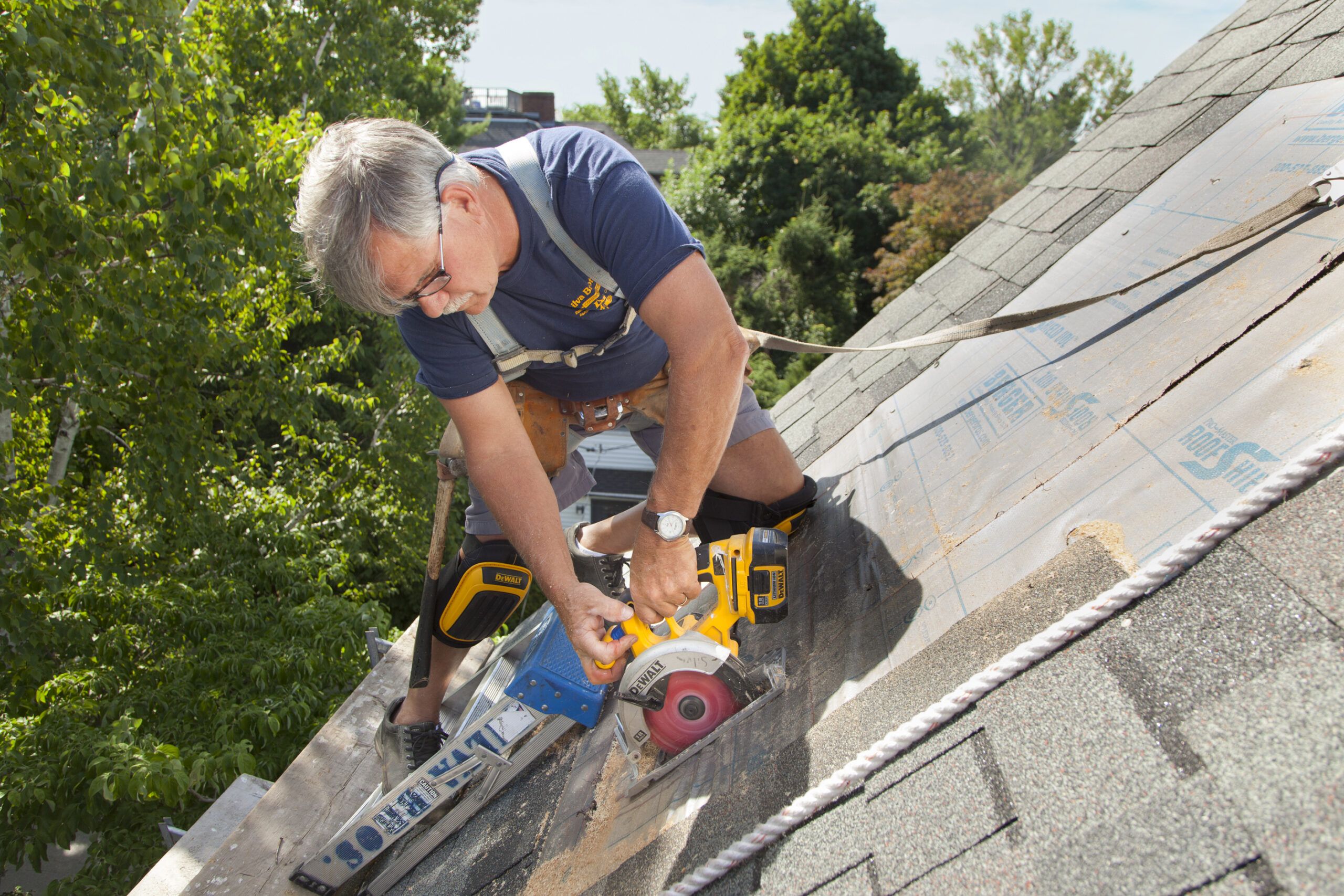
From inside your attic, use a deck screw to mark the corners of your rough opening by driving the screw up through the roof. Once you’re on the roof, remove the shingles around these marks, extending about 7 inches beyond each point. Use a chalk line to connect the screws, creating a clear outline for your cut.
With a circular saw, carefully plunge-cut through the sheathing along three sides of the chalk lines. Stay off the cutout area for safety reasons. Have a helper inside to support the cutout as you complete the final side of the cut.
Step 2: Flash the Sill
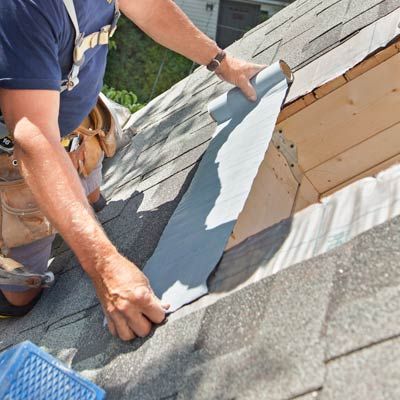
After cutting the opening, prepare the sill for the skylight installation. This step creates a waterproof barrier at the bottom of the opening, which is often the most vulnerable area for leaks.
Begin by nailing down the roof sheathing around the perimeter of the opening. Make sure the sheathing is secure and provides a solid foundation for the rest of the installation process. Next, apply a strip of self-adhesive membrane across the bottom edge of the opening. This waterproof barrier should extend slightly beyond the sides of the opening.
To ensure a tight seal, cut and fold the top inch or so of the membrane strip over onto the exposed sill. This creates a small lip that helps direct any water that might reach this area back onto the roof surface.
Step 3: Place the Skylight
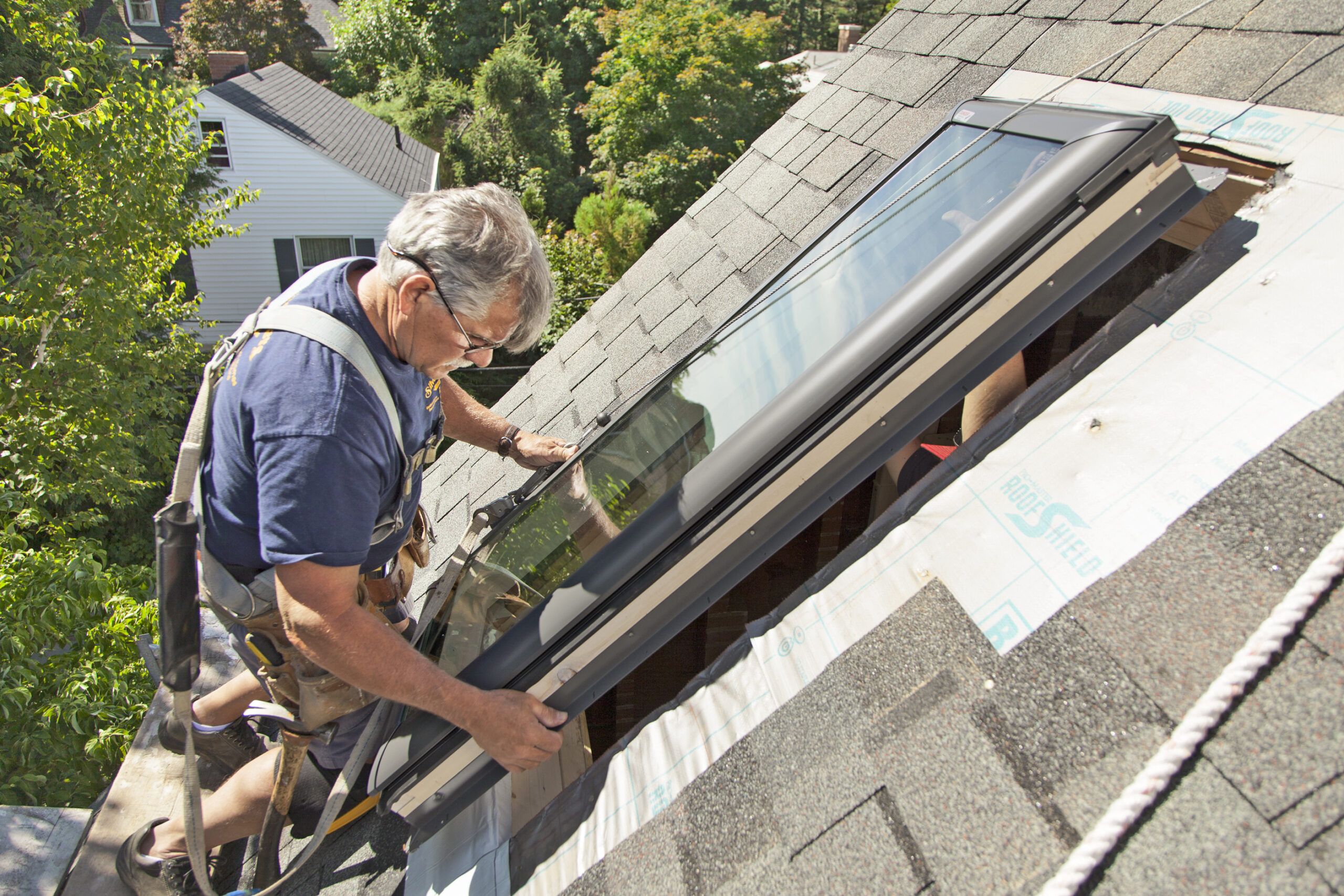
With the opening prepared, it’s time to position the skylight. This step requires at least two people for safe and accurate placement. One person should be inside the attic to guide the skylight into position, while another manages the installation from the roof.
Carefully lift the skylight through the opening from the inside. Rest its bottom edge against the prepared sill, then lower the unit onto the roof. Once it’s in place and level, secure the skylight by driving 1¼-inch galvanized roofing nails through the pre-drilled holes in the skylight’s flange and into the roof.
Step 4: Seal the Sides
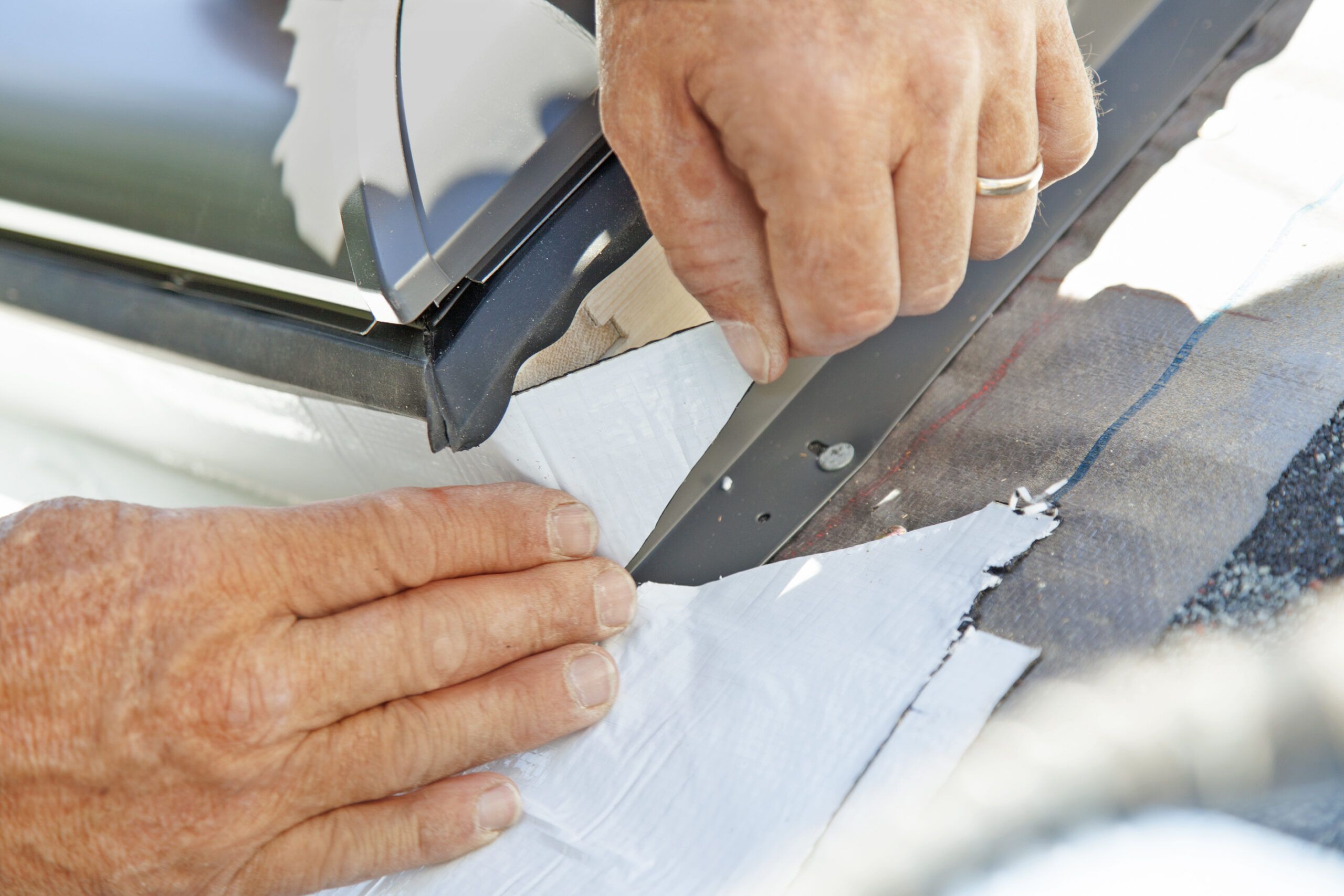
This process involves applying additional layers of waterproof membrane to create a tight seal between the skylight and the roof surface.
Start by covering the bottom flange with a strip of membrane that extends 6 inches past the skylight’s sides. At both corners of the skylight, cut the extensions at a 45-degree angle. Wrap the top part of these cuts around the skylight’s frame and press the remaining portion against the roof.
Repeat this process for the side flanges and then the top, always working from bottom to top to ensure proper water shedding. This layered approach creates multiple barriers against water infiltration.
Step 5: Sill-Flash the Bottom Edge
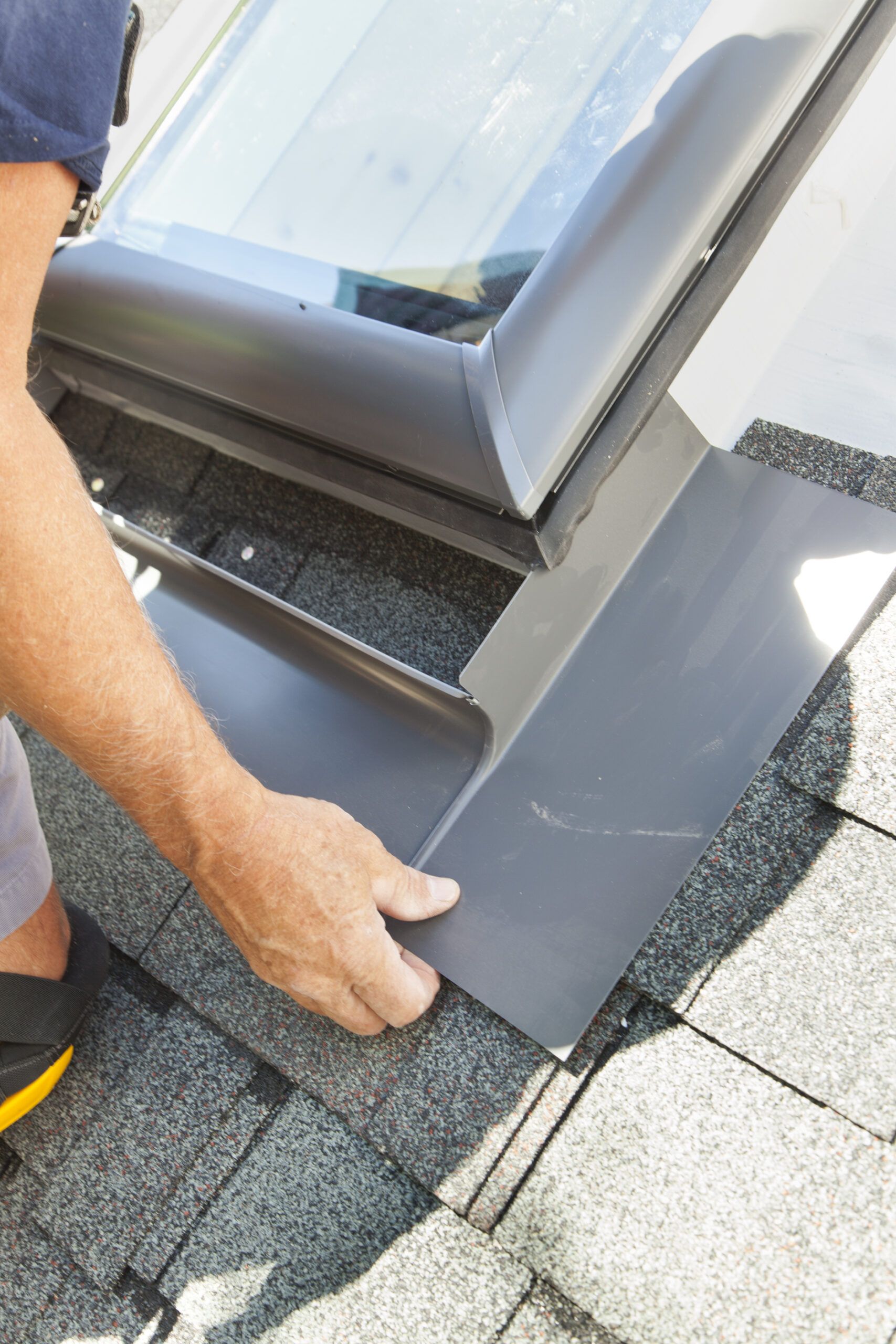
The sill flashing prevents water from seeping under the skylight. This step involves installing both shingles and a specialized flashing piece to create a watertight seal at the bottom of the skylight.
Begin by nailing roofing shingles over the bottom membrane. The self-adhesive nature of the membrane will seal around the nail holes to prevent leaks. Next, place the U-shaped sill flashing over these shingles, slipping it over the bottom end of the skylight to protect the bottom edge.
Secure the sill flashing by nailing it to the roof at the top outside corners of the U-shape. Cover the exposed sides of the flashing with additional shingles to complete the waterproof barrier at the bottom of the skylight.
Step 6: Step-Flash the Sides
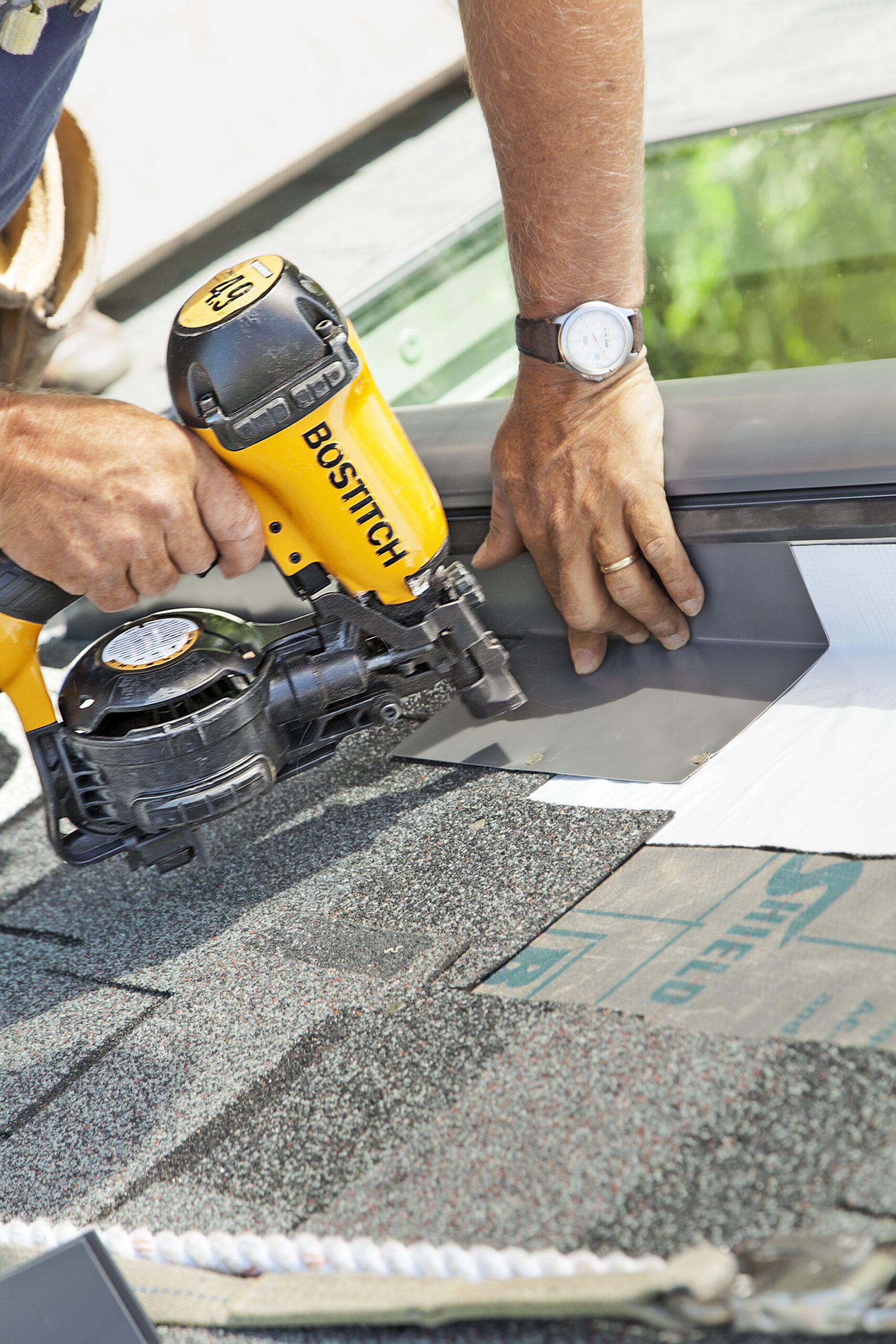
Step flashing helps waterproof the sides of the skylight. This method involves alternating layers of flashing and shingles to create a series of small dams that direct water away from the skylight opening.
Start at the bottom of one side, overlapping the top half of the shingles that cover the sill flashing with a piece of L-shaped step flashing. Secure this piece with two nails: one near the top outside corner and another a few inches below.
Cover this flashing with a shingle, then add the next piece of flashing atop that. Continue this alternating pattern up both sides of the skylight.
Step 7: Counterflash the Sides
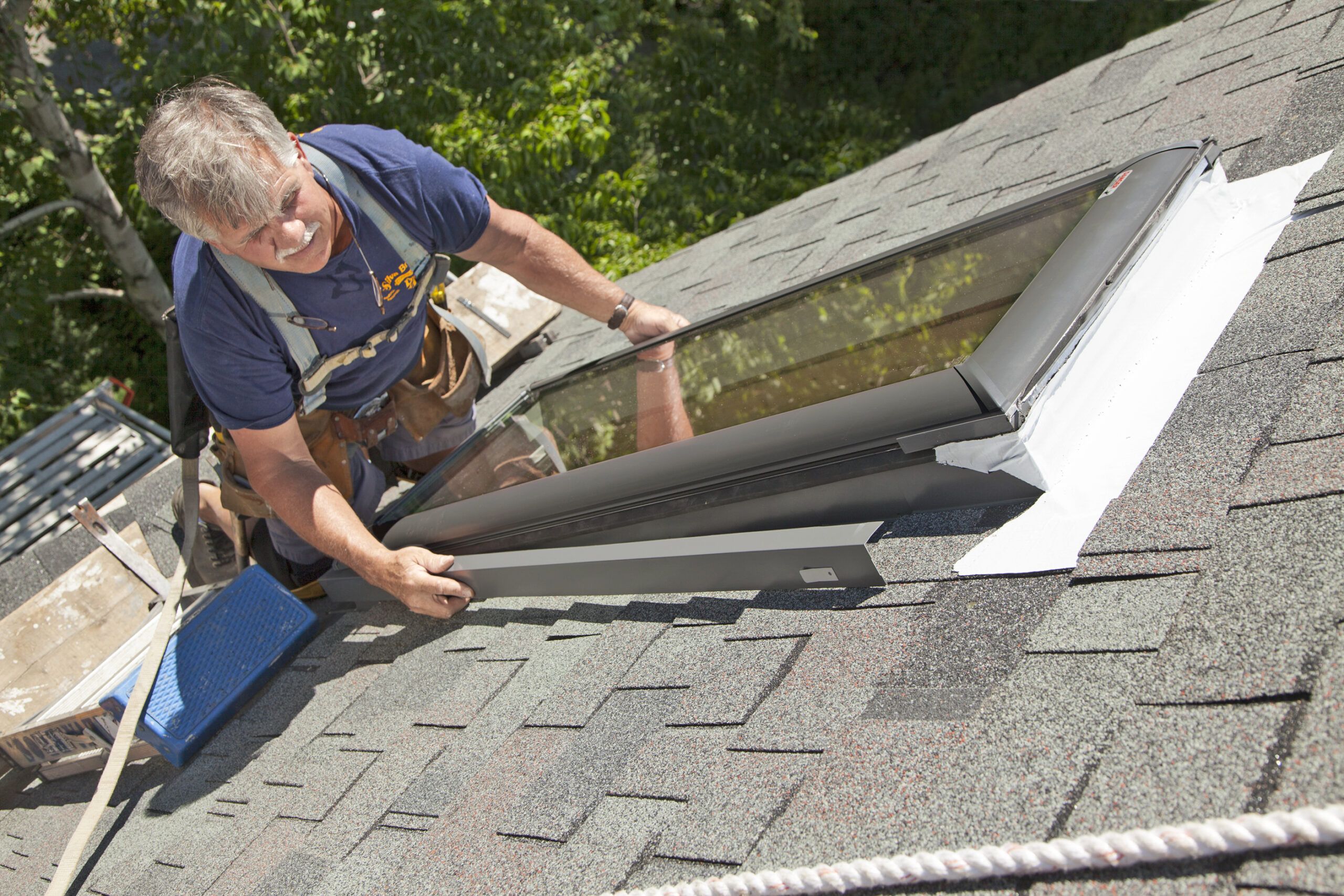
The counterflashing serves as a final barrier, preventing any water that might get past the step flashing from reaching the interior of your home. This is particularly important in areas prone to heavy rain or snow, where wind can drive moisture up and under less protected skylights. This step involves covering the vertical legs of the step flashing with strips of counterflashing, which snap onto the rim of the skylight.
Step 8: Install the Saddle Flashing
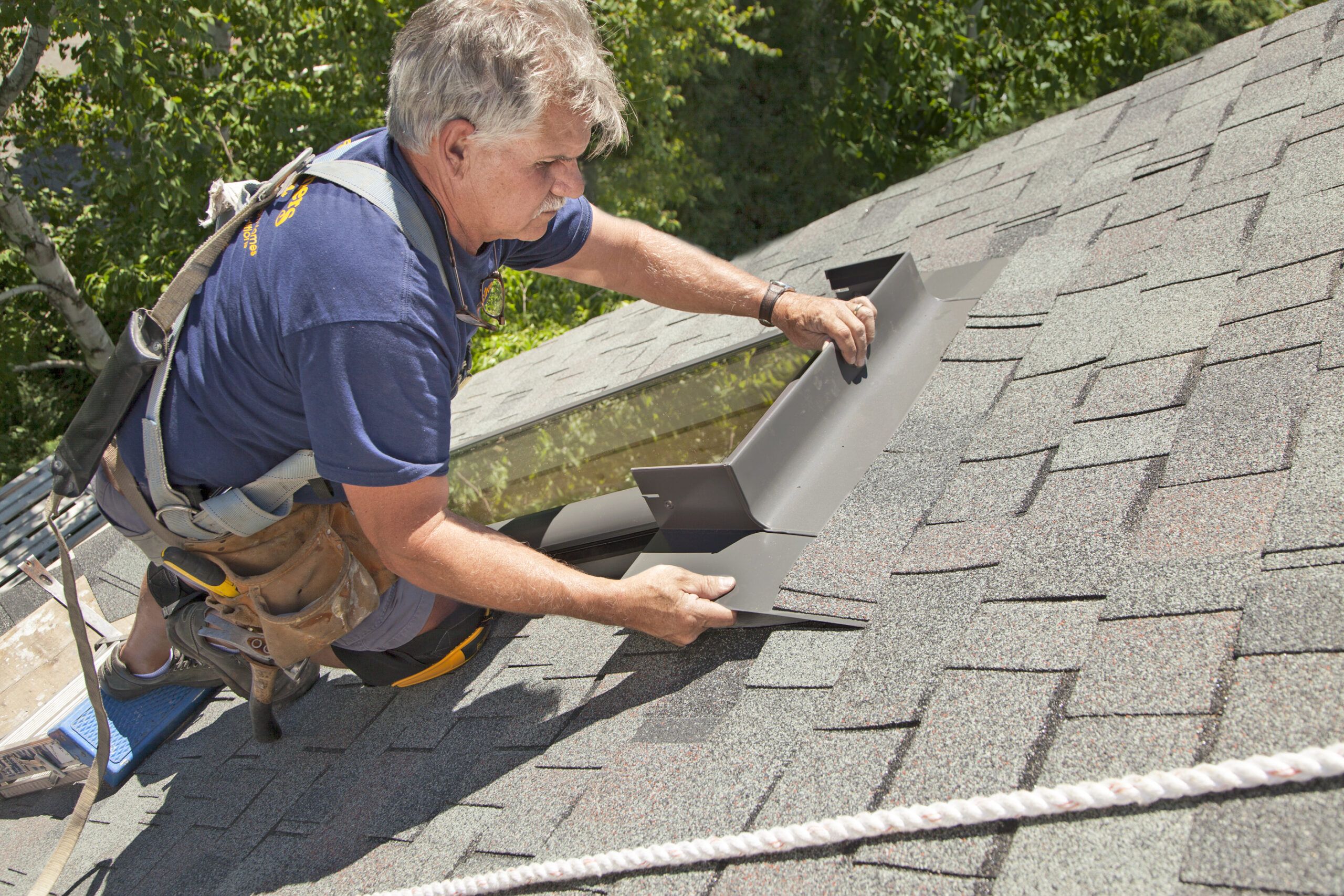
The final step in waterproofing your skylight installation is the saddle flashing. This piece diverts water around the top of the skylight to prevent it from pooling behind the unit.
To install the saddle flashing, lift the first course of shingles above the skylight. Carefully slit the underlayment (the sheeting under the shingles), and slip the top edge of the saddle flashing up through this slit. This step helps protect the integrity of the underlayment while accurately positioning the flashing.
Fit the flashing snugly against the skylight, then lift the shingles and nail the flashing at its top corners. Complete the installation by nailing a final course of shingles over the flashing, leaving about 4 inches of it exposed to ensure proper water diversion.
Skylight Maintenance Tips
Regular maintenance helps keep your skylight leak-free and functional. Here are some tips to keep your skylight in top condition:
- Check the skylight’s interior for any signs of moisture or discoloration, which could indicate a developing leak.
- Clean the skylight glass regularly using a non-abrasive cleaner to maintain clarity and maximize light transmission.
- Clear any debris from around the skylight to prevent water buildup. Standing water can lead to leaks and damage.
- Consider applying a UV-protective film to reduce heat gain and protect interior furnishings from fading.
- Inspect the skylight and surrounding roof area at least twice a year, ideally in spring and fall. Regular inspections can identify potential problems before they become serious.
Our Conclusion
Learning how to install a skylight can add value and natural lighting to your home, but it can also be a complex and dangerous project. If you’re not comfortable working on your roof or lack the necessary skills, it’s always best to hire a professional to ensure the job is done safely and correctly.
